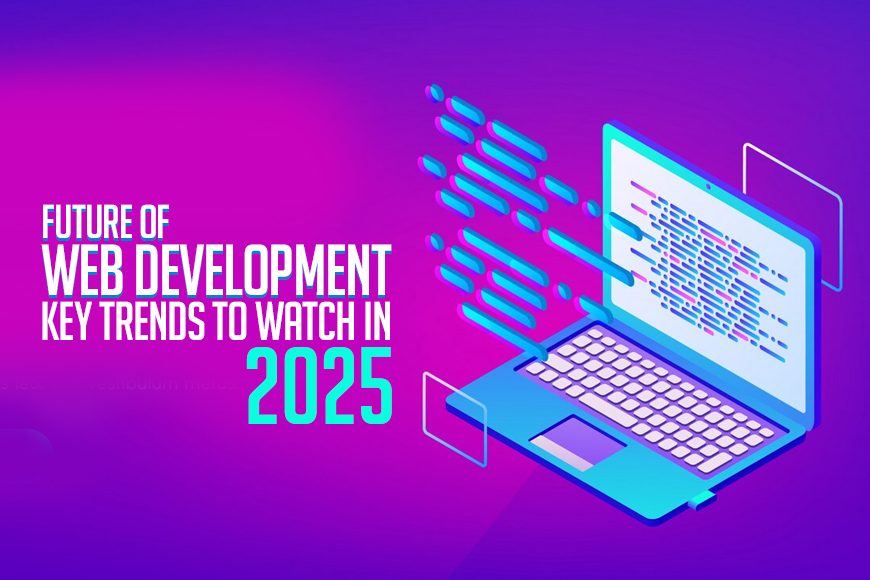From a shift in preferred coding language and the expanding role of AI in web development to the evolution of new cybersecurity technologies, keeping up with the modern trends is important for web developers.
Web development continues to evolve at lightning speed. As technology matures and user expectations rise, developers and businesses must stay ahead of the curve. Whether you’re a seasoned developer, a startup founder, or a student, understanding upcoming trends can give you a competitive edge.
Here are 7 top web development trends to watch in 2025:
1. AI-Powered Development
Artificial intelligence (AI) is no longer a futuristic concept—it’s already transforming how websites and apps are built. In 2025, AI tools like GitHub Copilot, ChatGPT, and other code-generation assistants will become an integral part of the development workflow.
Key Benefits:
- Faster coding through auto-suggestions
- Bug detection and resolution
- Automated testing
- Smarter chatbots and user interactions
Expect to see AI deeply integrated into both frontend and backend processes, helping devs save time and build smarter apps.
2. Jamstack Architecture
The Jamstack approach—short for JavaScript, APIs, and Markup—continues gaining momentum due to its performance, security, and scalability advantages.
Why it’s trending:
- Pages load faster
- Works well with headless CMS (like Strapi or Sanity)
- Supports static site generation
- Easier CI/CD integration
Frameworks like Next.js, Nuxt, and Gatsby are leading the charge for Jamstack adoption, especially for content-heavy or e-commerce sites.
3. Progressive Web Apps (PWAs)
PWAs offer app-like experiences in the browser, and they’re becoming a go-to solution for businesses that want mobile reach without developing native apps.
What makes PWAs great:
- Can work offline
- Installable on home screens
- Push notification support
- Faster and more reliable experiences
In 2025, more companies will replace their mobile apps with PWAs due to lower costs and better user accessibility.
4. Serverless Architecture
Going serverless means developers can run code without managing servers. Instead, cloud providers like AWS, Google Cloud, and Azure handle everything.
Benefits of Serverless:
- Scalability: Auto-scales as needed
- Cost-effective: Pay-as-you-go pricing
- Faster deployment and development
Popular platforms include AWS Lambda, Netlify Functions, and Cloudflare Workers. Serverless is perfect for APIs, background jobs, and real-time data processing.
5. Micro Frontends
Inspired by microservices, micro frontends break down a frontend app into smaller, independent parts that can be built and deployed separately.
Why it matters:
- Enables modular architecture
- Supports independent team ownership
- Increases code maintainability and reusability
As applications become more complex, this trend is especially useful for large-scale web apps where multiple teams are involved.
6. Motion UI & Microinteractions
Users now expect more than static interfaces. In 2025, animations, transitions, and microinteractions will play a key role in enhancing user experience.
Use Cases:
- Button hover effects
- Smooth page transitions
- Loading animations
- Visual feedback (like form validation)
Tools like Framer Motion, GSAP, and Lottie make it easier than ever to add delightful motion to your UI.
7. Low-Code & No-Code Platforms
With platforms like Webflow, Bubble, Wix Studio, and OutSystems, even non-developers can now build functional websites and applications.
Why it’s booming:
- Speeds up MVP development
- Reduces dependency on engineering teams
- Empowers entrepreneurs, marketers, and designers
While they won’t replace traditional coding for complex projects, these platforms are expanding the definition of who can build for the web.
Final Thoughts
2025 is shaping up to be a pivotal year for web development. From AI-driven coding to modular architecture and app-like experiences in the browser, the web is evolving faster than ever.
To stay competitive:
- Learn and adapt to new technologies
- Follow influential devs and thought leaders
- Contribute to open-source projects
- Experiment with new tools in side projects
Web development isn’t just about writing code anymore—it’s about building experiences that are fast, smart, and user-centric.

